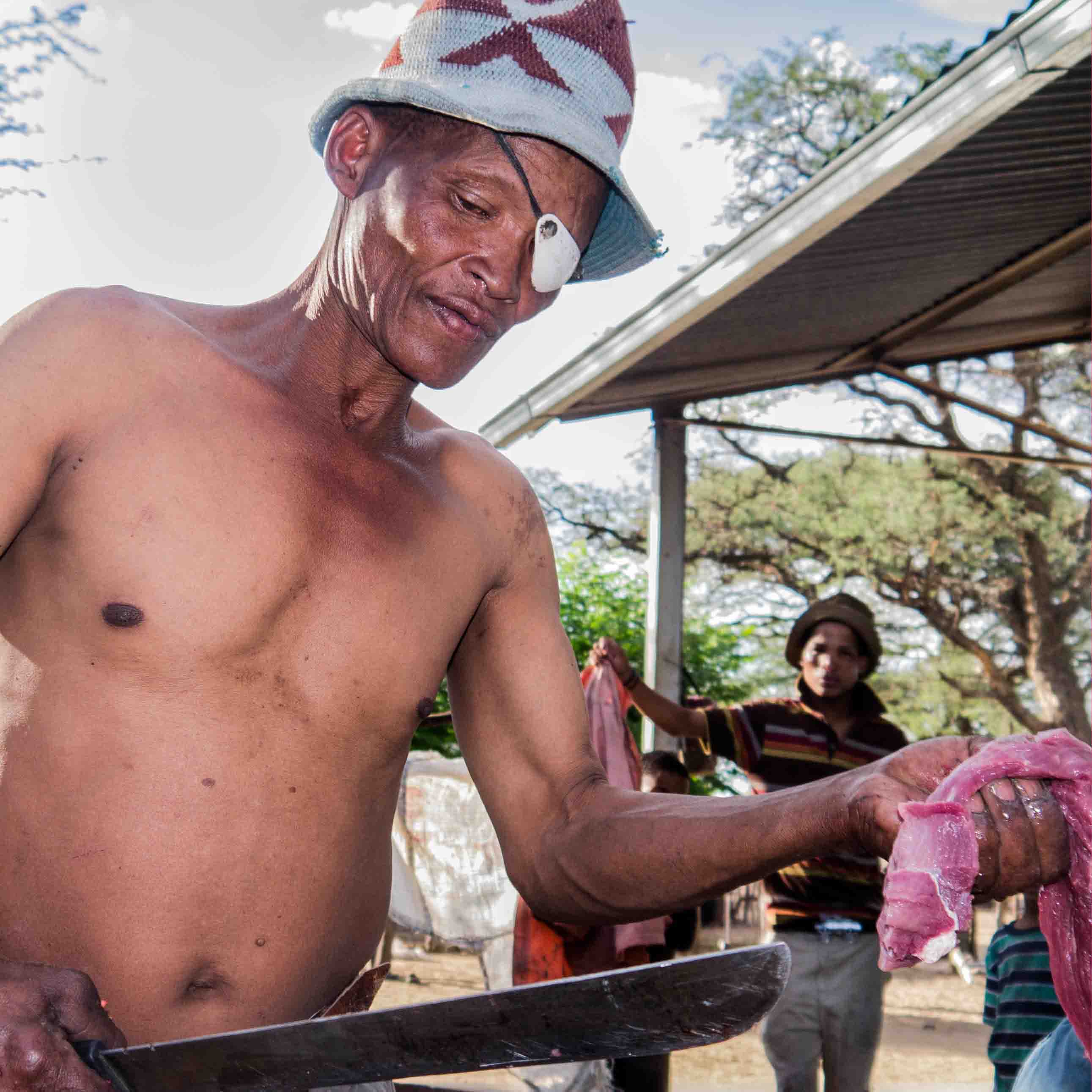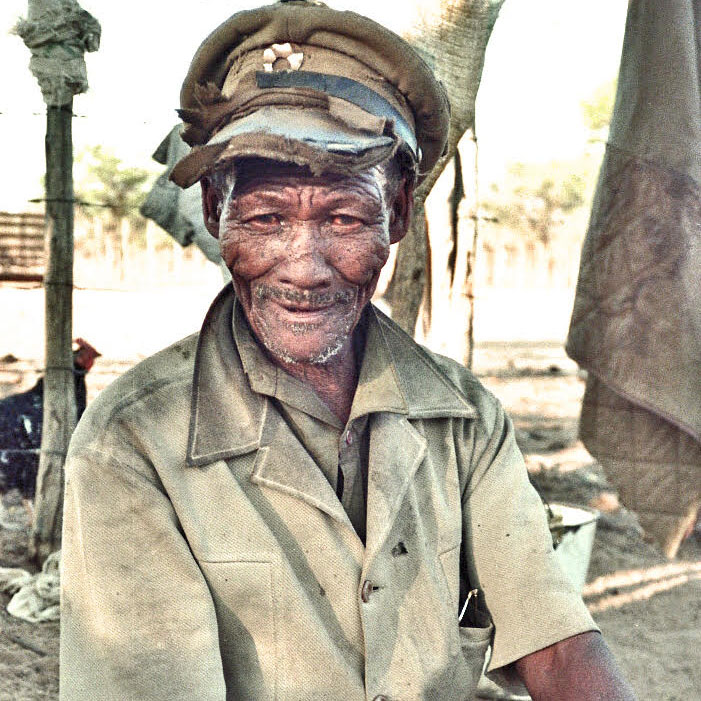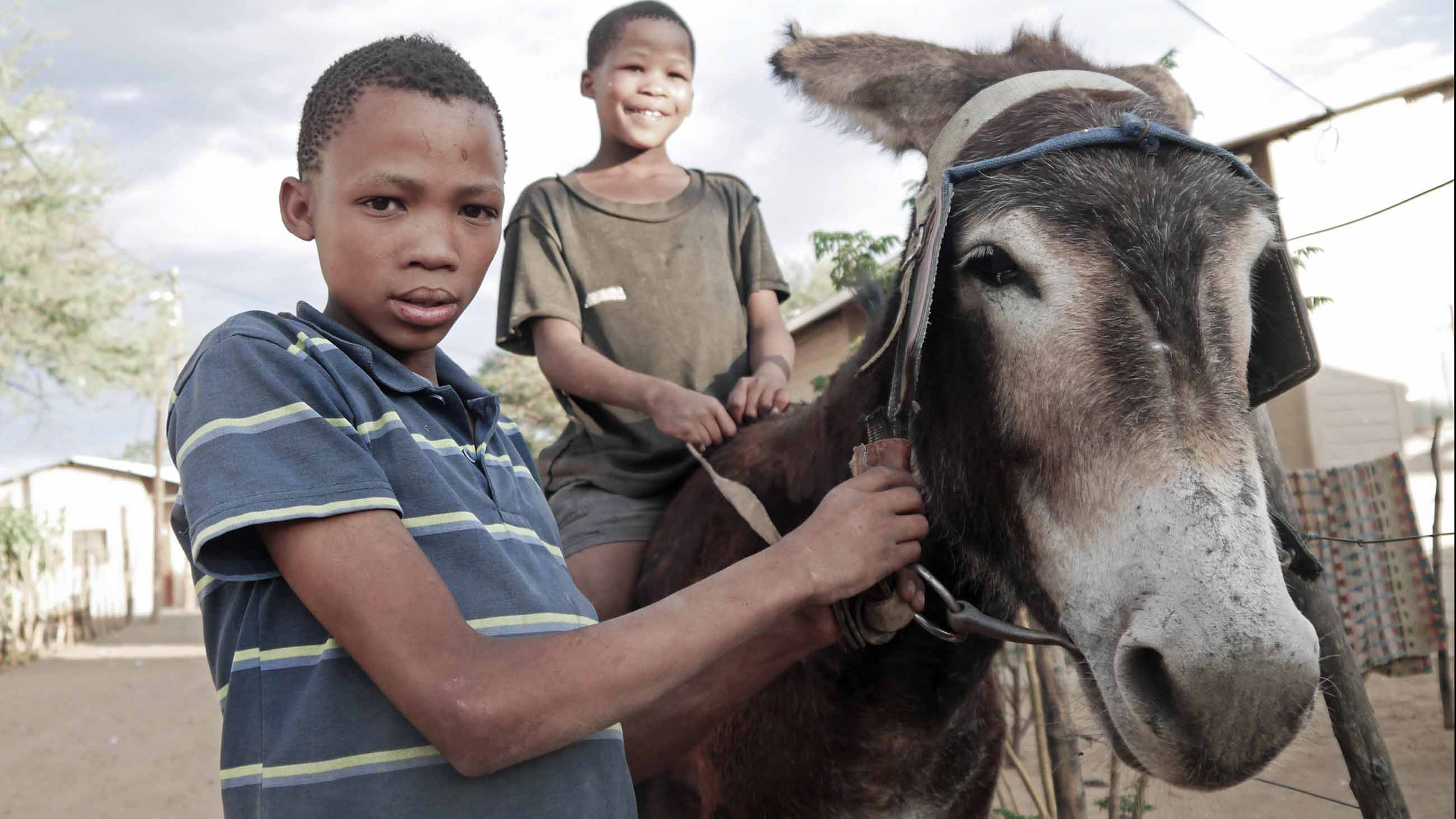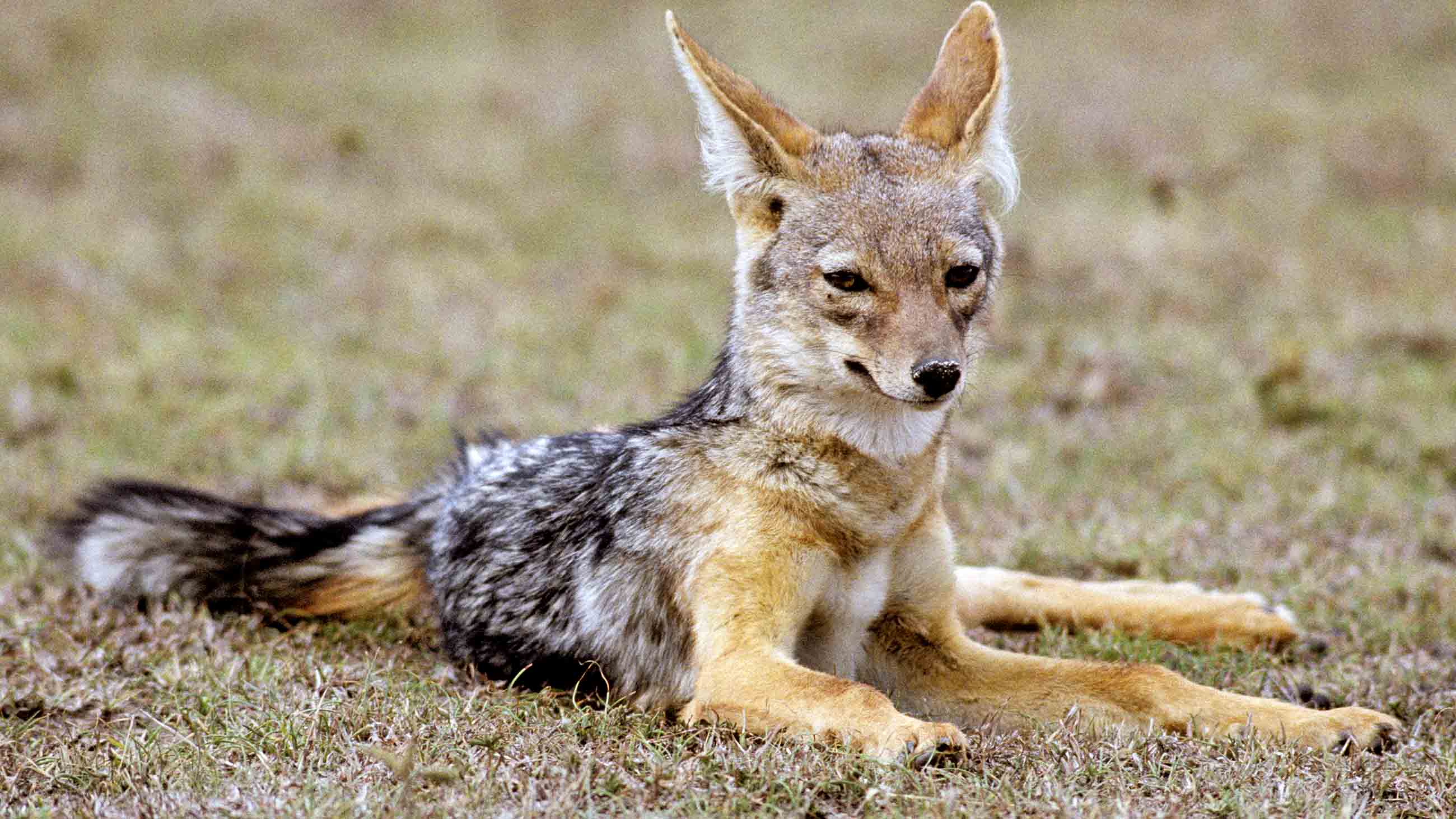One of my goats had gone missing. I’d left them in the care of my notoriously unreliable guide, Kaice. He was one of the 3,000 or so Ju/’hoansi (perhaps the best known of southern Africa’s diverse San or “Bushmen” peoples) among whom I had been living for the past year in the margins of Namibia’s Kalahari cattle ranches. He explained that the fattest goat in my small herd, a dappled brown male with an irrational confidence in humans and a worrying tendency to lick shoes, had been killed by jackals.

WHAT I LEFT OUT is a recurring feature in which book authors are invited to share anecdotes and narratives that, for whatever reason, did not make it into their final manuscripts. In this installment, James Suzman shares a story that was left out of his new book, “Affluence Without Abundance: The Disappearing World of the Bushmen” (Bloomsbury).
“They didn’t eat it all,” he pointed out helpfully, “just the liver, kidneys and the stomach.”
Three generations ago the Ju/’hoansi were undisputed masters of this semi-arid land, and they did not have to mind anyone’s goats. (Ju/’hoan is a click language, with different basic clicks represented by the symbols /, //, !, and ≠. To hear some spoken Ju/’hoan, follow this link.) The last remaining groups of Ju/’hoansi who still made a living from hunting and gathering in the 1960s were turning established ideas of social evolution on their head. Studies of their behavior showed that they were well-nourished despite working only two to three hours a day, and as a result enjoyed far more leisure time than the anthropologists who studied them.
But by the time I started living and working with them, in the 1990s, the Ju/’hoansi, like so many indigenous people around the globe, had been robbed of their lands and transformed into a highly marginalized, racially stigmatized underclass forced to forage creatively on the grim fringes of an ever more intrusive globalized economy. When I conducted a human rights survey covering all of southern Africa’s 100,000 so remaining Bushmen, I determined that they were by far the worst off of all the region’s peoples on every measurable indicator, from life expectancy to access to education. And to try to make sense of this period of unimaginable upheaval, older Ju/’hoansi looked to their folklore about creatures like jackals that also had to survive by their wits.
I mentioned the fate of my goat to old /Engn!au, a frail one-legged shaman and the last of the Ju/’hoansi in his community who still voyaged into the spirit universe. His eyes bore the milky stains of cataracts and he struggled to see much beyond the small fire that burned in the sand by his hut. But he was unremittingly cheerful and did not long for clear eyesight. He preferred to dwell in a magical world of stories that existed behind the fog of his cataracts, a world populated by conniving jackals, naive porcupines, grumbling white farmers, and lions wielding police whips.
“/Kunta,” he replied with a grin, using my Ju/’hoan name, “the only jackals stealing your goats are the two-legged kind, and I know of at least one very hungry jackal that works with you sometimes.”
The Ju/’hoansi’s ancestors had hunted and gathered in this region continuously from a time at least 70,000 years before the first modern Homo sapiens ever set foot in the Americas. But in the late 1800s, the Germans came with their Imperial Schutztruppen (“protection troops”), and later, during World War I, the South Africans came with their ideology of “separate development.” They battered the Ju/’hoansi into submission and claimed the land for themselves. With borehole drills and pumps that could suck water from ancient aquifers deep below the sand, they transformed this semi-desert into a “cattleman’s paradise.”
The farmers did not drive the Ju/’hoansi away. They needed them for labor. But Ju/’hoansi were not accustomed to being laborers. Traditionally, as hunter-gatherers, they worked only to meet their immediate needs. So the farmers branded them “wild” and “childlike” and, aided by legislation that empowered them to run their farms like medieval fiefdoms, they did not spare the rod. Casual slaps, whippings, beatings, and occasionally far more horrific violence became part of the everyday grammar of interaction between Ju/’hoansi and their new masters.
When I first arrived in the Omaheke in the early 1990s, the violence was in decline. Namibia had achieved independence from South Africa in 1990, and apartheid was abandoned. Fearing sanction from the new government, farmers whittled down their workforces and chased other Ju/’hoansi off their land, leaving them to squat on roadsides and (after government intervention) on a couple of “resettlement farms” — one of which became my home.
To cope with the trauma of dispossession, many Ju/’hoansi took flight to a spirit world very different from /Engn!au’s — the world of liquid spirits, procured from industrious home brewers in exchange for casual labor.
As Kaice reminded me, with no apparent thought that it might incriminate him in the disappearance of my goat, “When you are drunk, you need meat. If you do not eat, then the hunger will eat you! When that happens and you see a goat, even if it is not your goat you will just take it, kill it, and eat it.”
But /Engn!au’s claim that it was a two-legged jackal that stole my goat was not simply a sly reference to Kaice. A two-legged jackal was the lead character in most of the stories he told as part of a narrative tradition that stretched back thousands of years.


Most people in the Kalahari consider jackals to be vermin. “Baby stealers and bin raiders,” as one burly Afrikaner farmer put it. They see no grace in the animals’ quick-footed gait and express no admiration for their resilience and adaptability. They take pleasure only in shooting the jackals and transforming their hides into snarling, eyeless wall hangings.
Yet jackals have survived because they are smart and resilient. When the moon is high, the nights resound with their keen yelps as they make their way, heads below their shoulders, distilling distant details out of the darkness by sound and smell. You might catch sight of one just for a moment as it cranes its neck to see above grass line. When the head drops again, the silver-black streaks on its back and face melt into the half shadows cast by the dry grass, and the jackal disappears.
Like the four-legged kind, /Engn!au’s two-legged jackal was smart and resilient. He went by the name Willem Poster, and like other trickster characters so common in hunter-gatherer folklore he was captive to his basest desires — jealous, scheming, and often foolhardy.
/Engn!au also insisted that Willem Poster was a Bushman and that this was no simple metaphor.
“He is not like a Bushman and he is not like a jackal,” /Engn!au would repeat, exasperated by my failure to understand something so obvious. “Willem Poster is a jackal and a Bushman! He is both. They are the same and he is real.”
The merging of Bushman and jackal was so symmetrical that when telling his stories /Engn!au would use the terms interchangeably. Sometimes he was Willem Poster, sometimes “the jackal,” and sometimes “the Bushman.”
The stories had a dreamlike quality. Willem Poster’s adventures were set in a time “when animals were people and people were animals,” in a parallel world that was similar to the one in which the Bushmen now lived but also different. There were the fences, cattle, donkeys, police stations, angry white farmers, and bullying Herero pastoralists. But this was a landscape also populated by a menagerie of desert creatures that were therianthropic, combining human and animal traits. There was the hard-working but naive porcupine who would often come to harm as a result of the jackal’s trickery. There were selfish steenbok, dull-witted and authoritarian lions, chirpy hyenas, and a host of other animal-people.
Bushmen across southern Africa traditionally expressed kinship with many other animals: elephants, because they had human-like breasts and lived in families; lions, because like Bushmen they were apex predators and social. And Bushmen felt a deep bond with the animals they hunted for meat: After all, the hunter’s skill was determined in part by his ability to merge into the spirit of his prey as he read its tracks. Success in this spiritual assimilation would ultimately enable their bodies to physically merge when, after the kill, the hunter consumed his prey.
The stories told by hunting and gathering Ju/’hoansi served another function beyond entertainment. Folklore provided a parallel universe in which life’s tensions could be played out, a sort of theater of the absurd in which characters acted out their baser desires and frustrations without real-world consequences. A recurring theme involved animal-people acting with great selfishness (in a society in which everything was shared and selfishness abhorred) or following forbidden lusts to their often-grim conclusions. And while this folklore comprised a series of canonical stories united by a handful of basic narrative elements, each individual story was unique — like 12-bar blues, with scope for infinite improvisation. Thus, each story was at once familiar and highly original.
And now in this era where hunting and gathering existed only in the memories of the old, jackals were considered the most Bushman-like of all the different animal-people with whom they once shared their world. For the jackal, like the Navajo’s coyote or the Aboriginal’s dingo, is a resourceful creature able to cope with change.

Like people, jackals are territorial and social, and families are based on a monogamous parental pair. The parents are diligent and affectionate, and older siblings help them care for young pups. While occasionally they hunt small antelope, mainly they scavenge carcasses left by others or prey on rodents, lizards, and insects. Those brave enough to risk assault by farm dogs or a bullet from a farmer’s rifle raid bins and scraps from fires. Most important, as /Engn!au pointed out, jackal siblings live by sharing, “just like the Bushmen.”
I pointed out to him that according to my well-thumbed “Behavior Guide to African Mammals,” black-backed jackal pups were also hierarchical and were known to snatch the food from the mouths of their weaker siblings. This, I said triumphantly, was very unlike Ju/‘hoansi. He looked at me as if I was a fool.
“Jackals,” he replied with great relish, “do not read or write books.”
/Engn!au’s audiences related to the kinds of problems Willem Poster created for himself by being drunk, lazy, jealous, or lustful. And they admired his resourcefulness in solving them.
But the stories that brought them the most joy were those in which jackals triumphed over the farmers who had taken their land. For these stories enabled them to celebrate themselves and, briefly, to forget that, like indigenous people elsewhere, their future lay in embracing a world-view very different from the one that had sustained their ancestors for so long.
And the most loved of these stories was about a magic pot. /’Engn!au told it like this:
Jackal had been riding his donkey and grew tired. He decided to stop and cook some meat. When the meat was cooking in his pot, he saw some Herero coming toward him. Quickly he covered the fire with sand so they could not see it.
When the farmers arrived he said, “Look, you black people, this is a magic pot. It doesn’t need a fire to cook food.” Jackal grabbed his whip and hit the pot three times. Tca-tca-tca! Then he opened it and showed the Herero the meat that was still sizzling from the fire.
“I will sell you this magic pot for 1,000 dollars,” he said.
“That is a wonderful pot,” the Herero conceded. So they gave Jackal 1,000 dollars, took the pot, and left.
When the farmers had walked for a while they grew hungry. So they put some raw meat in the pot and hit it three times with a whip. But when they opened it they saw that the meat was raw. So they hit the pot again. But the meat was still raw.
“We have been tricked!” they exclaimed. “This jackal, this Bushman, he is a crook.” So they went back to find Jackal. When Jackal saw them coming, he was scared. Quickly he took the money and shoved it into his donkey’s rear to hide it.
When they reached Jackal the farmers said, “Jackal, this pot is not magic. Take it and give us our money back!”
“I can’t,” replied Jackal, “This pot is yours now. Anyway, I have already spent the money.”
But just as he said this, the donkey farted. And all the money tumbled from its backside. For a second the jackal was terrified, but then he smiled and said to the farmers, “Look at this donkey. It’s magic because you feed it grass and it craps money. If you buy this donkey for 1,000 dollars it will crap more money for you!”
“Ah, this is a magic donkey!” agreed the farmers. So they gave the jackal another 1,000 dollars. And, with the donkey in tow, they went away again.
/Engn!au ended this story as he always did. He shook his head, smiled, and said: “Aaaah! This jackal. He is a real scoundrel.”
James Suzman, an anthropologist specializing in the Khoisan peoples of southern Africa, is director of Anthropos Ltd., a think tank based in Cambridge, England, that applies anthropological methods to solving contemporary social and economic problems.











Comments are automatically closed one year after article publication. Archived comments are below.
I started googling jackal pictures for inspiration and ended up here. What a fantastic read! Loved your writing style! Just beautiful. Thank you so much. Imagination is the one thing they’ll never take from us…
send more folk stories
i really admire it
I know where you are coming from James,and I like your writing style.
The story depicts all peoples dominated by the dictatorship opportunists and revisionist
Quick wit, adept & keen sense of humor, educating while entertaining. The wondrous world of the Bushman, subtly amazing. Rarely understood by the outside world, our immense ignorance arrogants us to a seemingly sofisticated enduring environment yet our demise lays patiently in wait & like one’s own snare laid for another we are trapped by the same.
I refuse to take this piece for granted yet my poverty condemns me to sin against the writer. For now, thank you very much. May your abilities endure
La Fontaine would kill for this story
Beautiful writing capturing the essence of rural Africa
I loved this. Thank you,